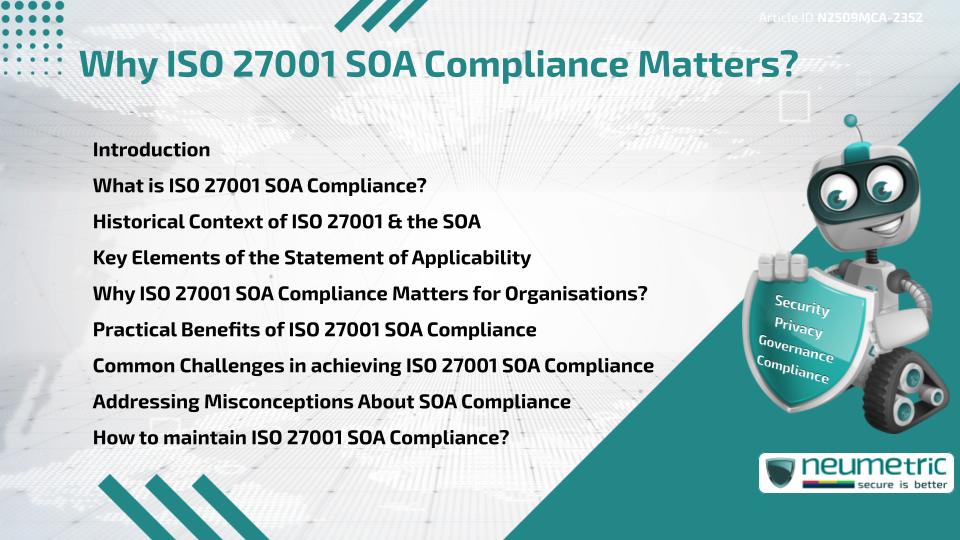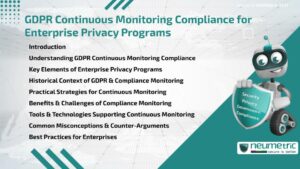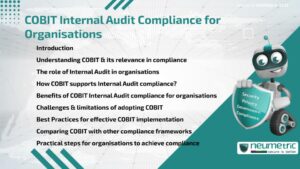Table of Contents
ToggleIntroduction
ISO 27001 SOA Compliance is central to how Organisations demonstrate their commitment to Information Security. The Statement of Applicability [SOA] is not just a formality but a vital part of the Information Security Management System [ISMS]. It helps businesses identify, justify & monitor the Security Controls that are essential for protecting Sensitive Data. Achieving ISO 27001 SOA Compliance strengthens Trust, reduces Risks & ensures alignment with International Standards. Without it, Organisations may leave Gaps in Security that threaten Operations & Reputations.
What is ISO 27001 SOA Compliance?
ISO 27001 SOA Compliance refers to an organisation’s ability to align with the ISO 27001 Standard by creating a clear, comprehensive Statement of Applicability. The SOA outlines which Security Controls from Annex A of ISO 27001 are relevant, whether they are implemented & the reasoning behind those decisions. Think of it as a roadmap that connects business goals with the right Security Measures.
Historical Context of ISO 27001 & the SOA
ISO 27001 emerged from the British Standard BS 7799 in the early 2000s, evolving into a globally recognised Framework for managing Information Security. The SOA was introduced as a way to ensure Organisations did not blindly adopt every control but instead applied them based on relevance & Risk. Historically, many Organisations struggled with “Checklist Security”. The SOA solved this by demanding justification & context, pushing companies to think strategically rather than mechanically.
Key Elements of the Statement of Applicability
The SOA has three main purposes:
- Identifying applicable Controls
- Explaining why each Control is included or excluded
- Showing how Controls are implemented
By documenting this, Organisations demonstrate Transparency & Accountability. It is similar to a restaurant menu where the chef explains why certain dishes are served & how they meet Customer expectations.
Why ISO 27001 SOA Compliance Matters for Organisations?
Compliance with the SOA ensures that Organisations are not just certified on paper but are genuinely managing security Risks. This compliance matters because it:
- Enhances Trust with Clients & Partners
- Protects Sensitive Data from Breaches
- Helps meet Legal & Regulatory obligations
- Aligns Security Measures with Business Objectives
For example, a Financial institution cannot afford to leave any doubt about its Data Protection practices. By showing ISO 27001 SOA Compliance, it proves that Risks are recognised & controlled in a structured way.
Practical Benefits of ISO 27001 SOA Compliance
Organisations that prioritise SOA compliance often see measurable improvements, including:
- Reduced Audit times, as Auditors can easily verify Control decisions
- Greater efficiency in resource allocation, since Controls are applied only where necessary
- Stronger resilience against Cyber Threats, thanks to a systematic Risk-driven approach
This is not just about ticking boxes; it is about making informed choices that strengthen the business.
Common Challenges in achieving ISO 27001 SOA Compliance
Many Organisations encounter obstacles on the road to Compliance:
- Misunderstanding the purpose of the SOA
- Struggling to document justifications clearly
- Overcomplicating the control selection process
A frequent misconception is that all Annex A Controls must be applied. In reality, ISO 27001 SOA Compliance allows exclusions, provided they are justified based on Risk Assessments.
Addressing Misconceptions About SOA Compliance
One common myth is that SOA compliance is just paperwork. In truth, it is an operational tool that influences daily practices. Another misconception is that the SOA is static. In fact, it must be reviewed & updated whenever Risks, technologies or business priorities change.
How to maintain ISO 27001 SOA Compliance?
Maintaining Compliance requires ongoing attention:
- Regular Risk Assessments to identify new Threats
- Annual reviews of the SOA document
- Internal Audits to test whether Controls remain effective
- Training Employees on the relevance of the SOA
In many ways, maintaining compliance is like maintaining a fitness routine-it is not a one-time event but a continuous discipline.
Takeaways
- ISO 27001 SOA Compliance bridges the gap between standards & real practices
- It ensures Organisations select & justify the right Controls
- The SOA promotes Transparency & Accountability
- It protects businesses, strengthens Trust & builds Resilience
FAQ
What is the purpose of the Statement of Applicability in ISO 27001?
The SOA identifies which Security Controls are relevant, explains their inclusion or exclusion & shows how they are implemented.
Does ISO 27001 require all Annex A controls to be implemented?
No, only controls that are relevant based on Risk Assessments & Business Needs must be included, with justifications provided for exclusions.
How often should the SOA be reviewed?
Organisations should review the SOA at least annually or whenever there are significant changes in Risks, Technologies or Business Operations.
Is ISO 27001 SOA Compliance only for large Organisations?
No, businesses of all sizes can benefit from SOA compliance, as it scales according to the organisation’s Risks & resources.
What happens if an organisation excludes a control from the SOA?
Exclusions are acceptable, provided they are justified with a clear explanation of why the control is not relevant.
How does SOA compliance help during an Audit?
It simplifies Audits by providing Auditors with a clear, structured document that outlines control decisions & implementations.
Is the SOA a public document?
Generally, the SOA is an internal document, though parts of it may be shared with Auditors or Stakeholders when necessary.
Need help for Security, Privacy, Governance & VAPT?
Neumetric provides organisations the necessary help to achieve their Cybersecurity, Compliance, Governance, Privacy, Certifications & Pentesting needs.
Organisations & Businesses, specifically those which provide SaaS & AI Solutions in the Fintech, BFSI & other regulated sectors, usually need a Cybersecurity Partner for meeting & maintaining the ongoing Security & Privacy needs & requirements of their Enterprise Clients & Privacy conscious Customers.
SOC 2, ISO 27001, ISO 42001, NIST, HIPAA, HECVAT, EU GDPR are some of the Frameworks that are served by Fusion – a SaaS, multimodular, multitenant, centralised, automated, Cybersecurity & Compliance Management system.
Neumetric also provides Expert Services for technical security which covers VAPT for Web Applications, APIs, iOS & Android Mobile Apps, Security Testing for AWS & other Cloud Environments & Cloud Infrastructure & other similar scopes.
Reach out to us by Email or filling out the Contact Form…





